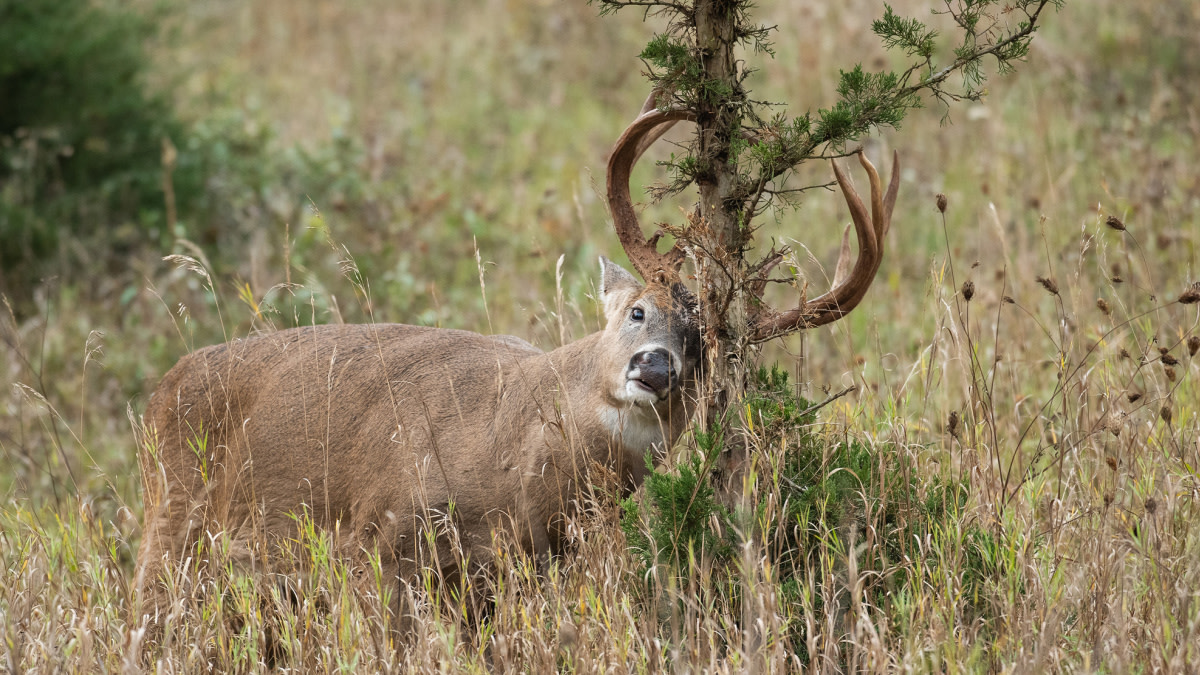
If you give hunters a platform to gripe, you’ll hear a wide variety of complaints that generally fall into a few categories. One of the most popular centers on access to ground, or lack thereof. It’s true that outbreaks of strip malls and McMansions are eating up whitetail habitat on a daily basis and leasing properties has never been more popular. Both contribute to a loss of access, oftentimes resulting in crowding issues. State game agencies are well aware of this.
To combat fewer available acres, many states have developed walk-in access programs. They go by different names depending on the state, but all generally come from the same source—private landowners. Parcels are opened up through direct funding to the landowners, or in some cases through tax incentives. In many whitetail states, these programs are gaining steam by the year. For deer junkies, this is a good thing.
Home and Away Walk-In Acres
Whether you’ll never cross state lines to hunt, or you hit up six states a season, the first step to taking advantage of this type of public land is to find it. If you’re using an app like onX, make sure every map layer that will show every type of public ground is activated. The walk-in parcels will generally display through a different overlay color or pattern than state or federally owned ground.
There are two important considerations to make once you identify some of these properties. The first is that some programs are multi-year, while others can end at any time. The latter happened to me in Wisconsin when the landowner decided to pull his property out of a tax-incentivized program after being enrolled for a decade. Be aware that this type of land is essentially on loan to the state, but is never really state property.
The second consideration is that these programs are state specific with state specific rules. You might be able to leave a stand up overnight or run a camera on a state-owned property, but both acts are prohibited on a walk-in piece just down the road. The same goes for shed hunting and using anything with wheels (game carts, e-bikes, etc.).
Research the restrictions before scouting or hunting this type of land and understand that it’s usually more restrictive than you’d probably prefer. The upside is that sometimes people won’t hunt this ground because they gravitate toward easier options. Like crossing a river to get to a stand, the hassle can be a good thing to keep people out.
Diamonds in the Rough
Public land hunter Andy May is a big fan of walk-in areas. He travels to multiple states each fall, and always factors in walk-in ground during his digital scouting phase.
“When I’m researching hunts, I always look at all possibilities for hunting ground. Over the years I’ve found some hidden gems in the walk-in category. While the bigger chunks with good cover tend to draw tons of pressure, smaller, overlooked pieces can be the ticket.”
May has killed some great bucks, oftentimes from the ground due to a lack of trees, on these crappy looking parcels. In them, he might be hunting only a small strip of cover in the middle of a seemingly featureless tract of ground, but that’s all it takes to hold some deer.
I’ve seen similar situations play out in my travels as well. In states like South Dakota, Iowa, and Montana, some of the land enrolled in these programs looks absolutely worthless. In truth, to the deer hunter, some of it is. You might see an 80-acre field that is chisel-plowed, has zero cover, and would be as productive as if you were bowhunting on the moon. But a similar looking parcel might have one tiny woodlot or a creek drainage in it that changes the game entirely.
Walk-In Timing
Another whitetail killer with a penchant for public land bucks is Alex Gyllstrom. While there are several states you might find him in throughout fall, his favorite destination is Kansas, for reasons beyond the quality of the herd.
“When it comes to public land, I love variety. Kansas has plenty of public land, and their walk-in hunting areas (WIHA) are some of my favorites because they are often owned by cattle ranchers.”
While most hunters have some level of disdain for a herd of bovine spoilers grazing beneath their stands, Gyllstrom uses the presence of cattle on WIHAs to his advantage.
“A lot of ranchers move their cattle in the fall to different pastures. When this rotation happens, the cows will be gone and the bucks will often move in. I love finding fairly fresh cattle sign, but no actual cattle around, mixed with really fresh buck sign.”
Gyllstrom has built a hunting strategy around some of the unique challenges of hunting walk-in parcels, and it works. In 2018 I spent a few days struggling in South Dakota due to constant cow presence until I went for a long walk on a 5000-acre ranch. I eventually crossed a fence into a pasture that hadn’t been grazed in awhile.
It became immediately apparent that I was around a high concentration of deer. After a quick ground setup, I arrowed a doe, and 10 minutes later, a decent buck. This was after three days of not being able to see a deer on the same walk-in ranch.
If you can’t play the grazing pattern, you might be able to play the timber-production game. Or you might be able to simply hunt whitetails on primo agricultural fields that normally would not exist on typical state or federal land.
Walk-in access can provide an incredible opportunity to expand your hunting ground. You just need to find the parcels, figure out what you can and can’t do, and then get in and work a property-specific plan.
Feature image via Matt Hansen.




